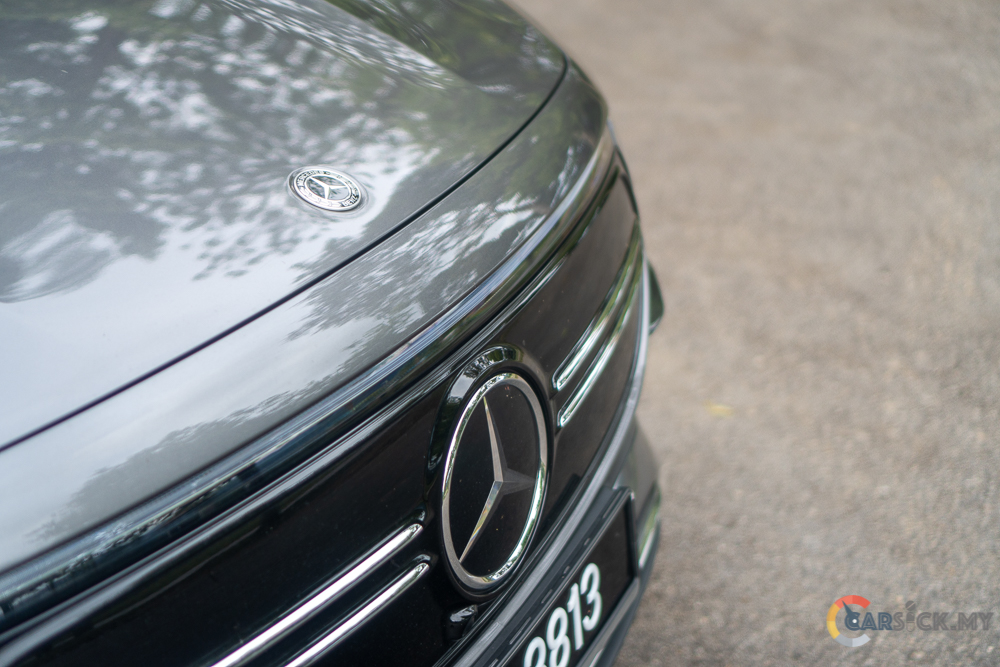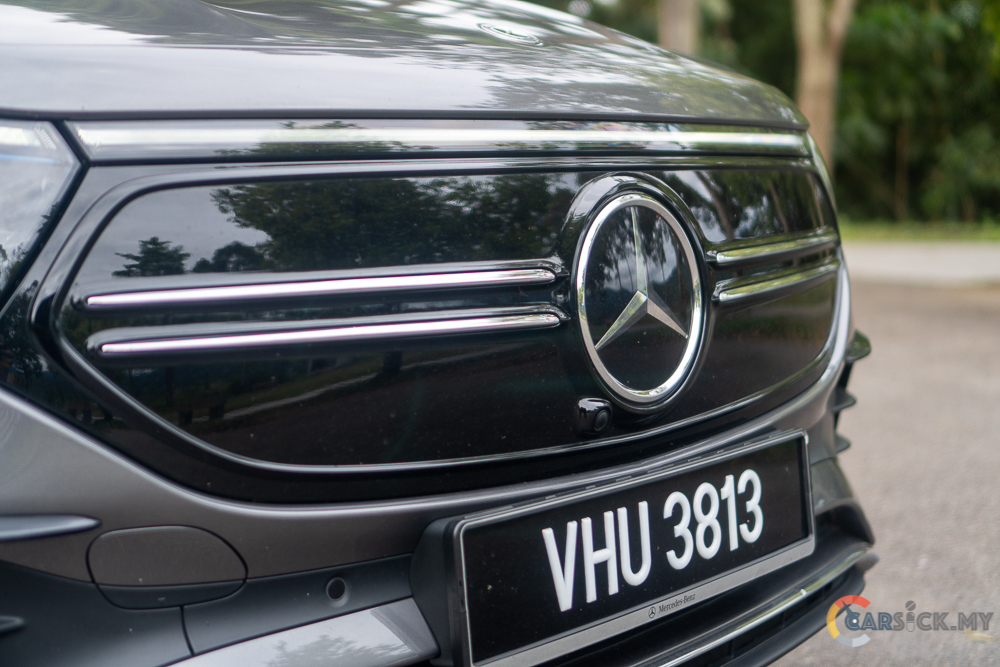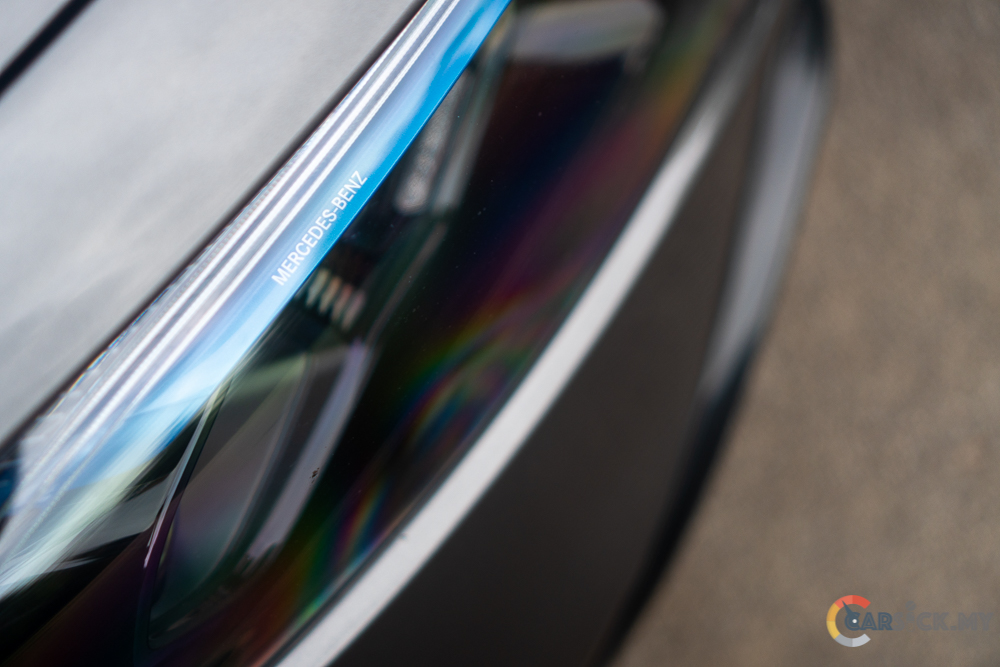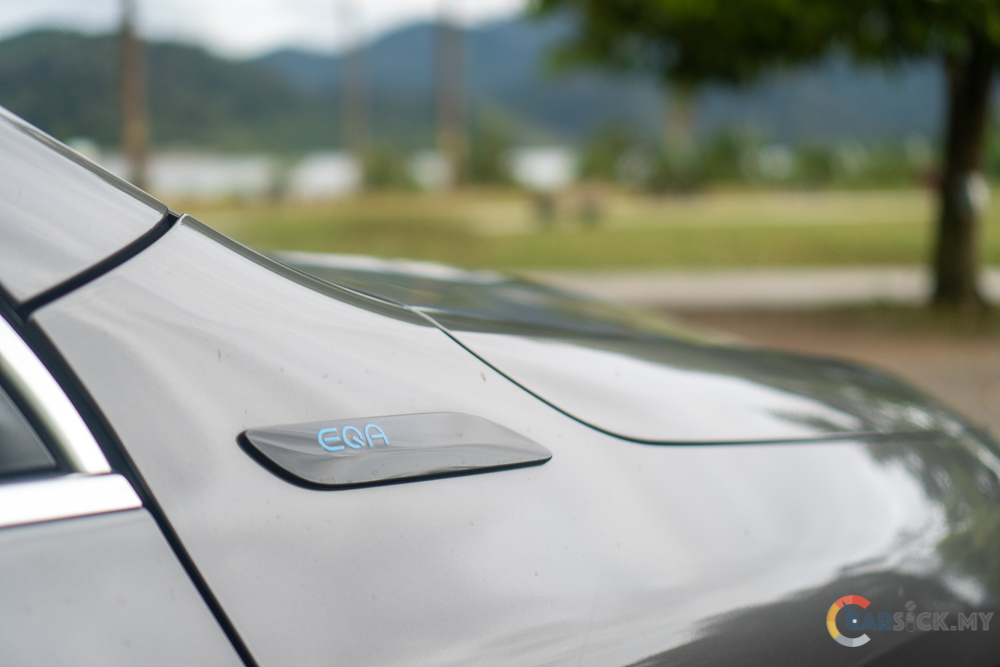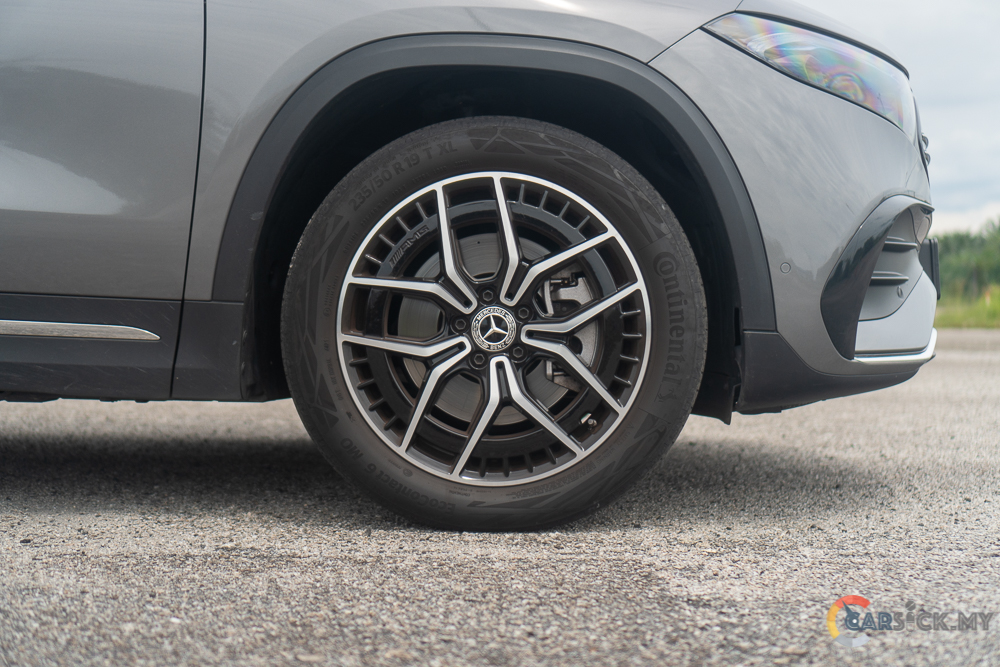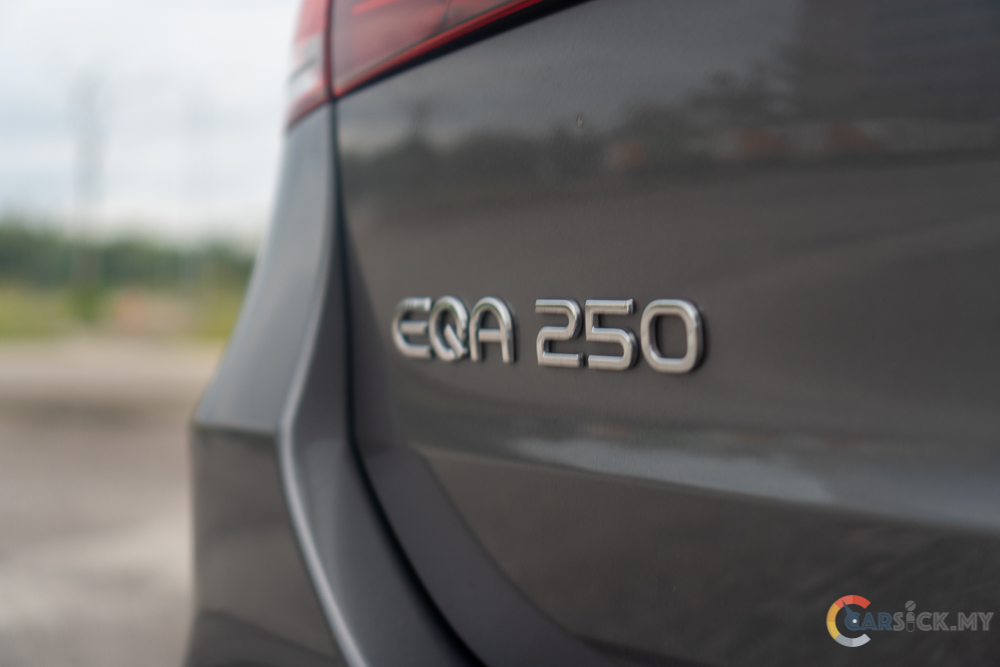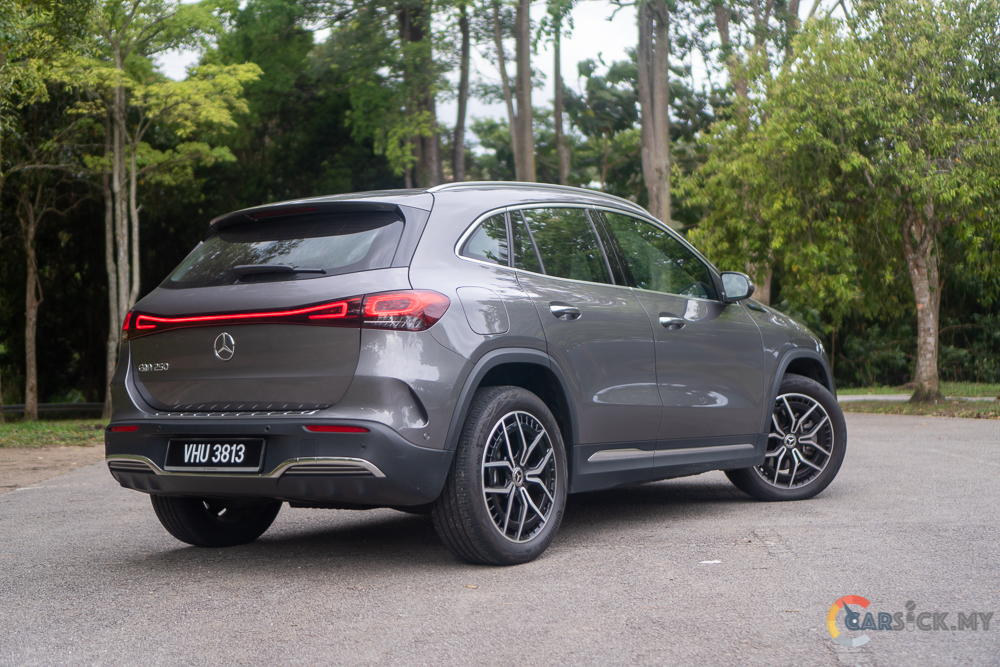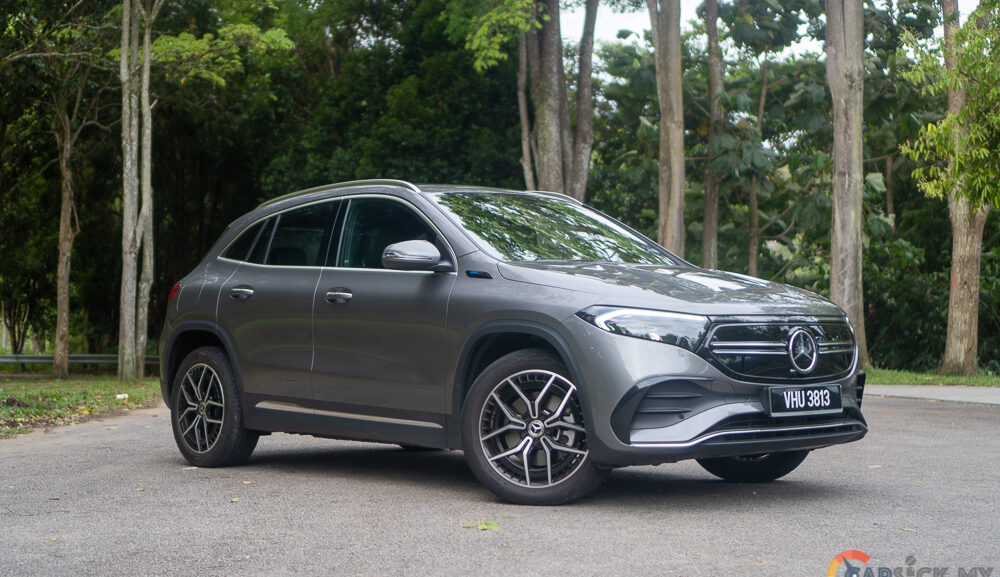Having just tested the first electric vehicle from Mercedes Benz, I was given the opportunity by Mercedes Benz Malaysia to test drive the first vehicle they introduced in Malaysia. The Mercedes EQA 250 is built on the GLA platform and is considered the introductory model of the Mercedes EQ line, providing an opportunity for individuals to try out a Mercedes electric vehicle. In this review, I will delve into the details of the Mercedes EQA 250 and explain why I believe it is a harmoniously designed electric vehicle.
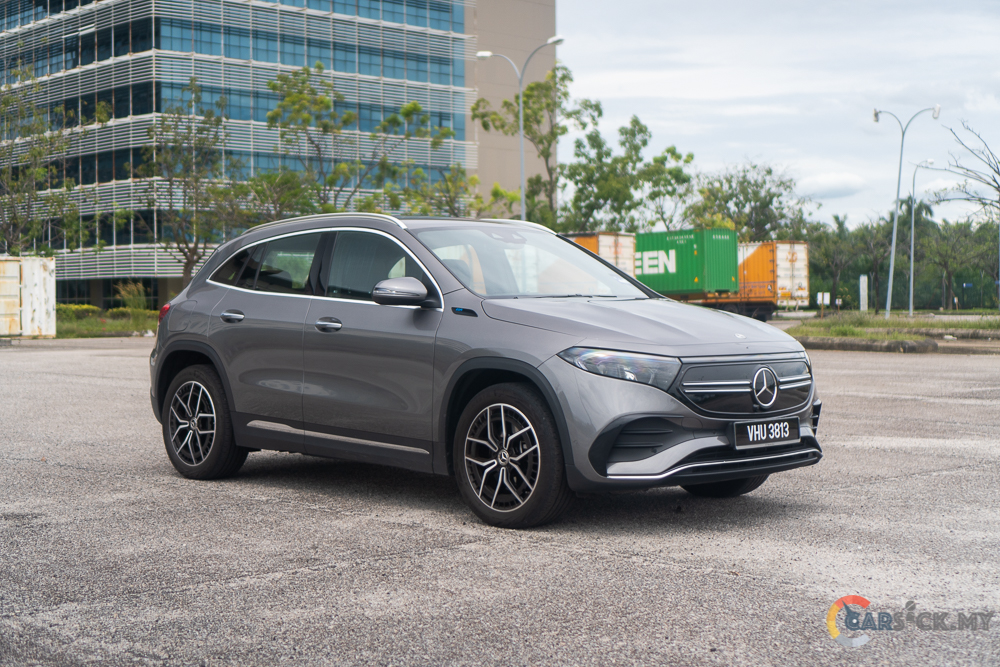
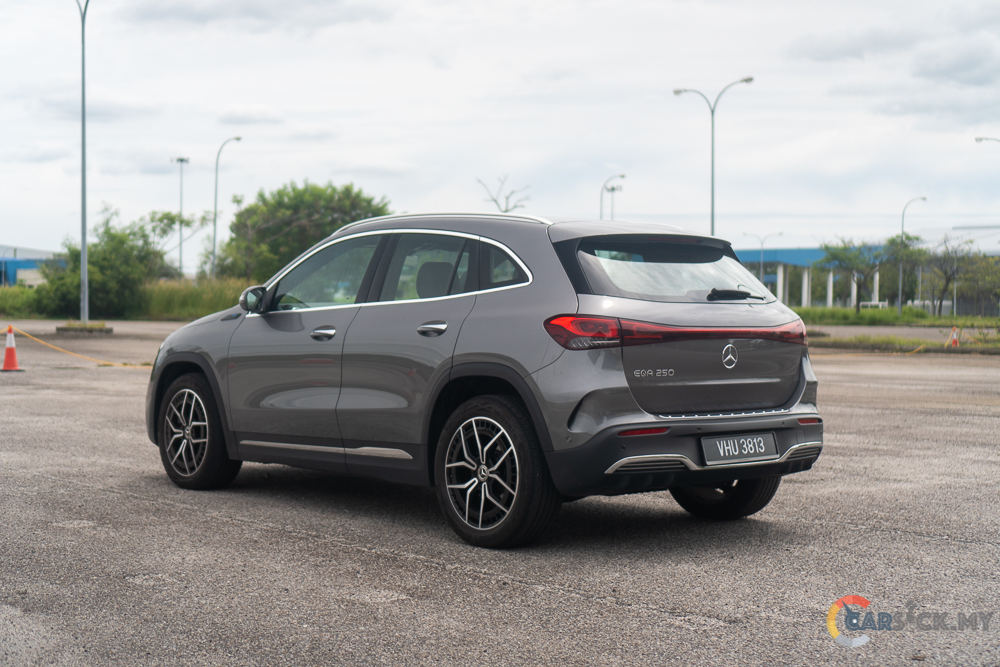 Similar to the EQC, the EQA receives distinct EQ features that indicate its electric powertrain. Beginning with the front end, the EQA features a plastic grille cover to minimize aerodynamic resistance. Additionally, a light bar connects to the headlights on top of the grille cover. Similarly to the EQC, the EQA showcases updated headlights that differentiate it from the GLA.
Similar to the EQC, the EQA receives distinct EQ features that indicate its electric powertrain. Beginning with the front end, the EQA features a plastic grille cover to minimize aerodynamic resistance. Additionally, a light bar connects to the headlights on top of the grille cover. Similarly to the EQC, the EQA showcases updated headlights that differentiate it from the GLA. 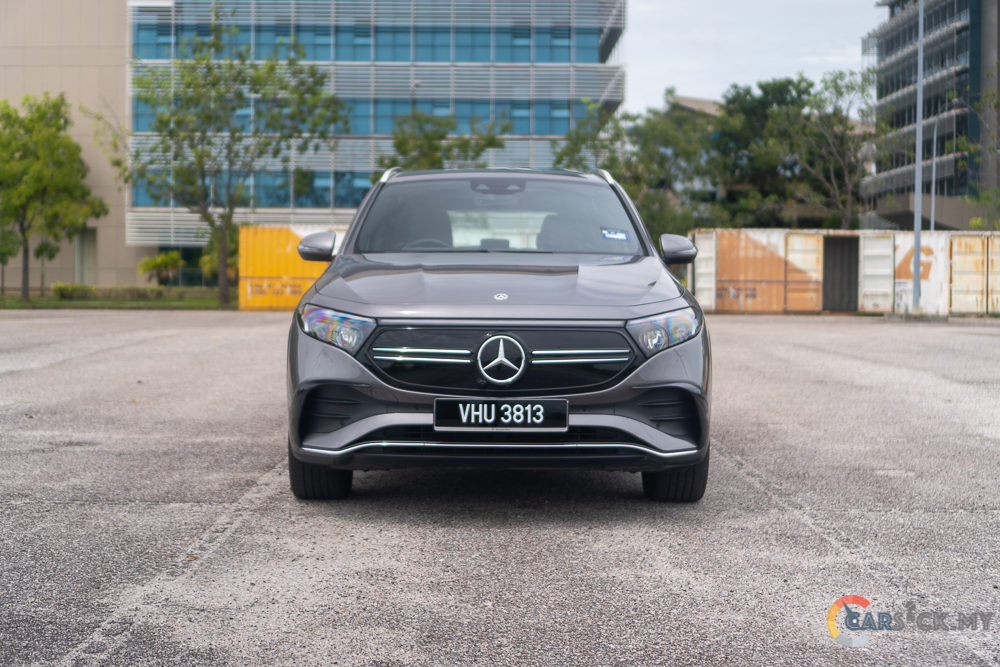
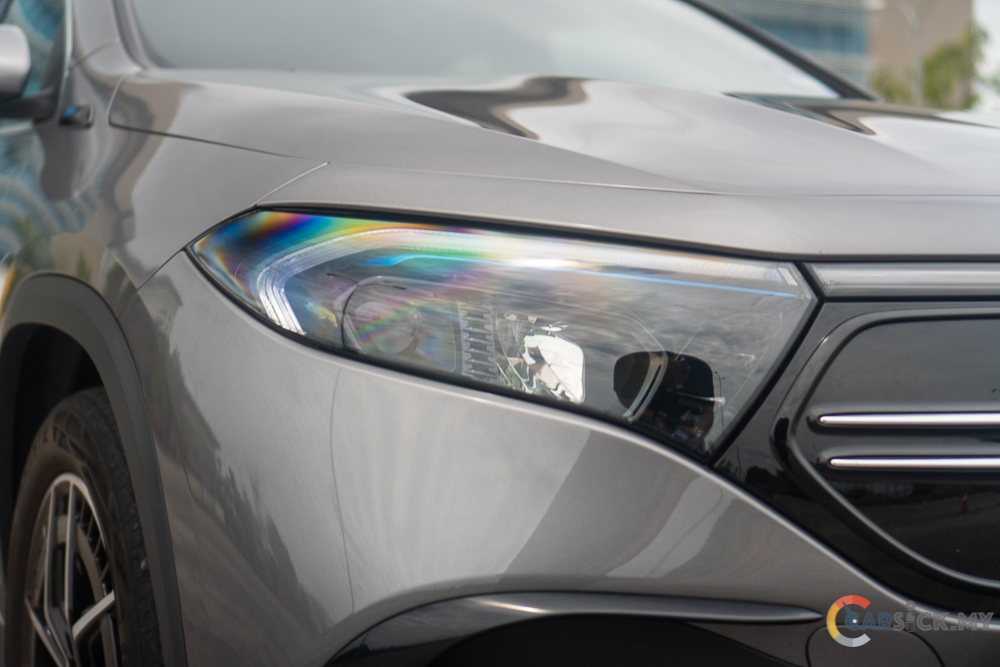
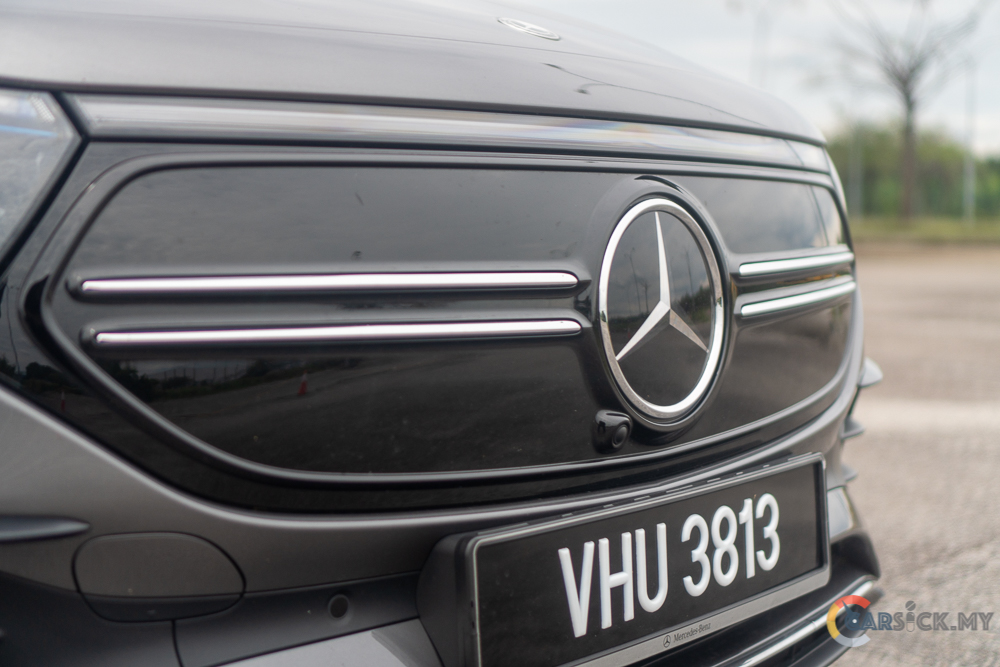
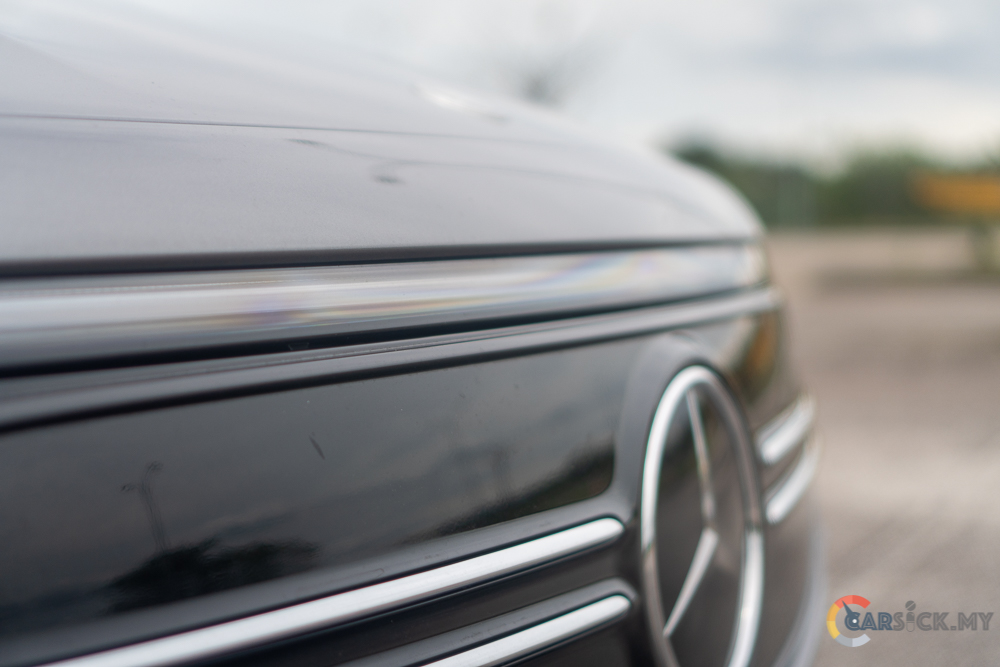
At the back, the taillights of the EQA have been redesigned, including a light bar that runs across the tailgate. This new feature required the tailgate to be revamped for a sleeker appearance and relocation of the boot opening switch. The switch is now integrated into the logo on the EQA. Additionally, the EQA has rims similar in design to the EQC, but an inch smaller at 19 inches and wrapped in 235/50 R19 tires. However, the EQA’s rims are the same size as the GLA 250. 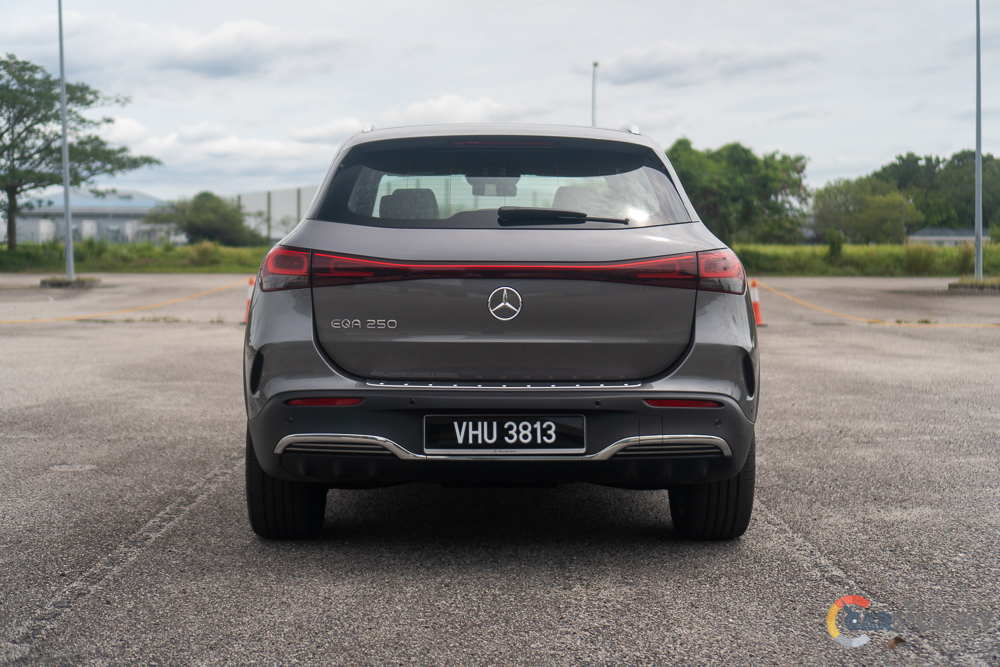
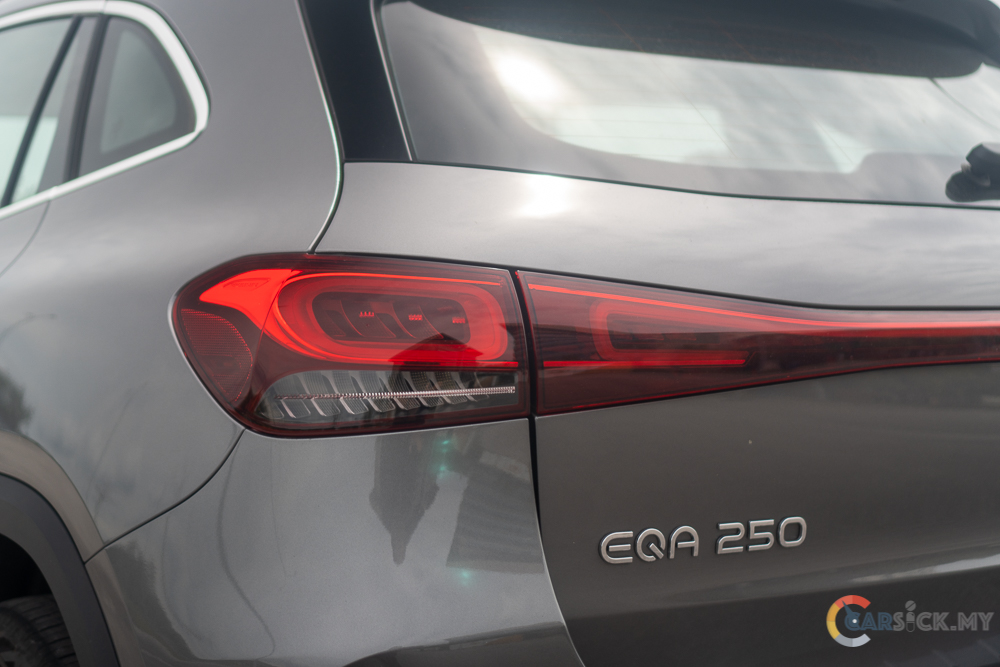
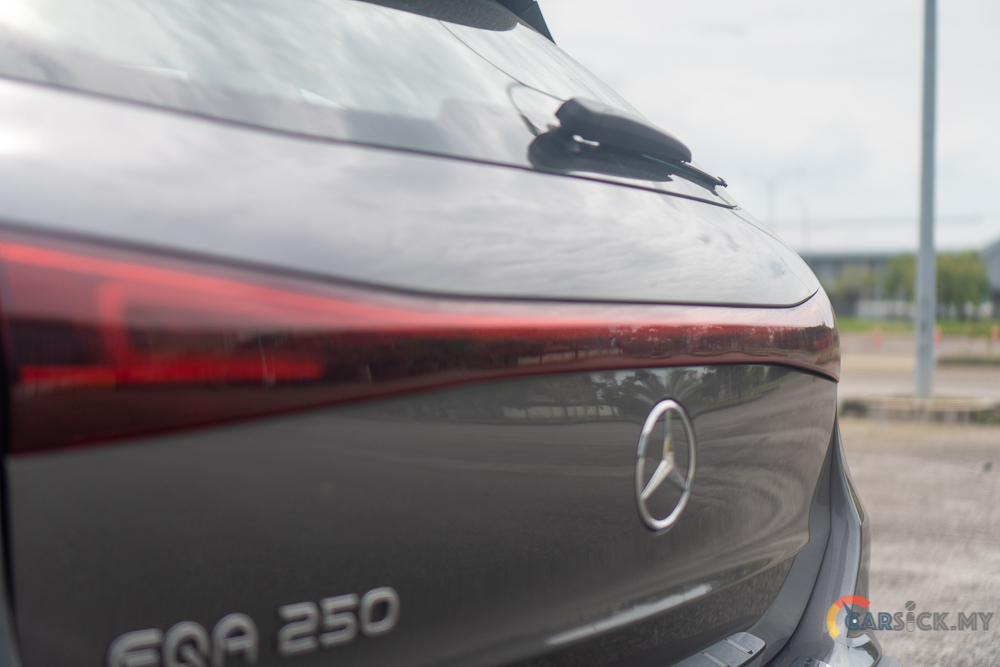
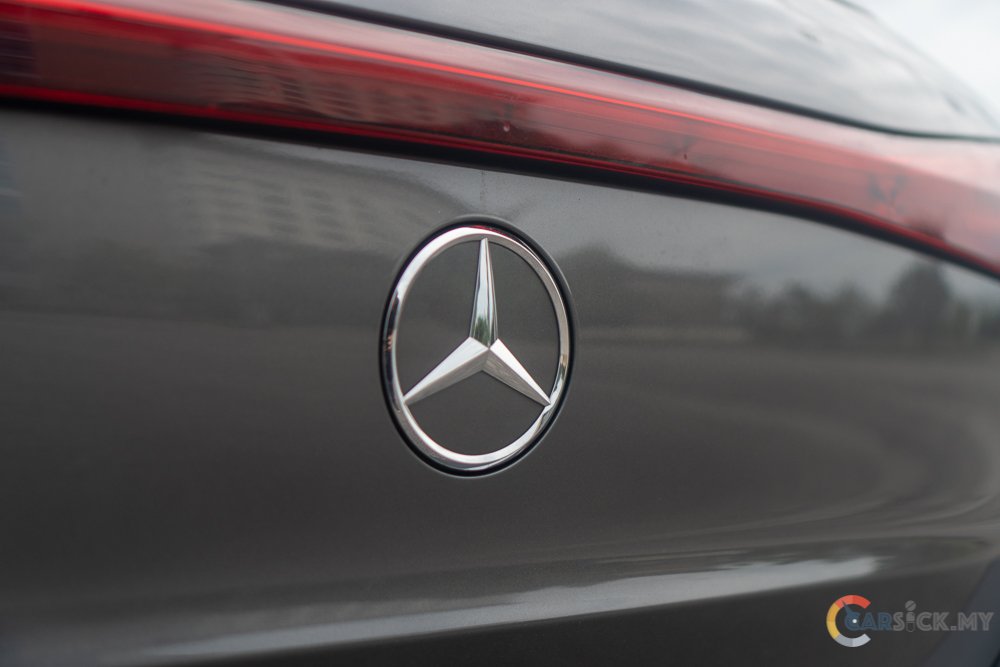
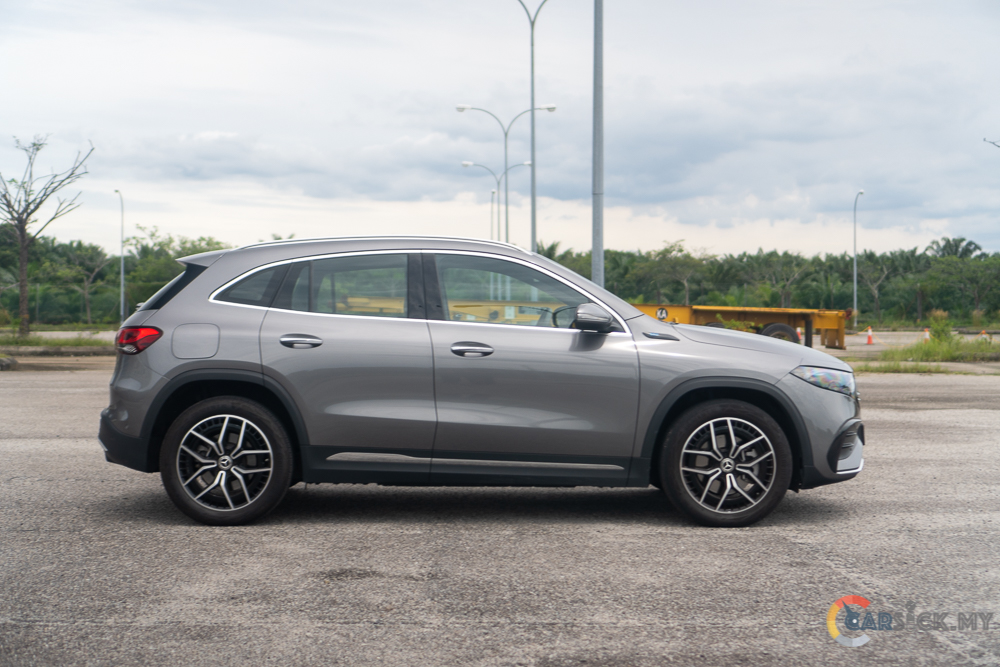
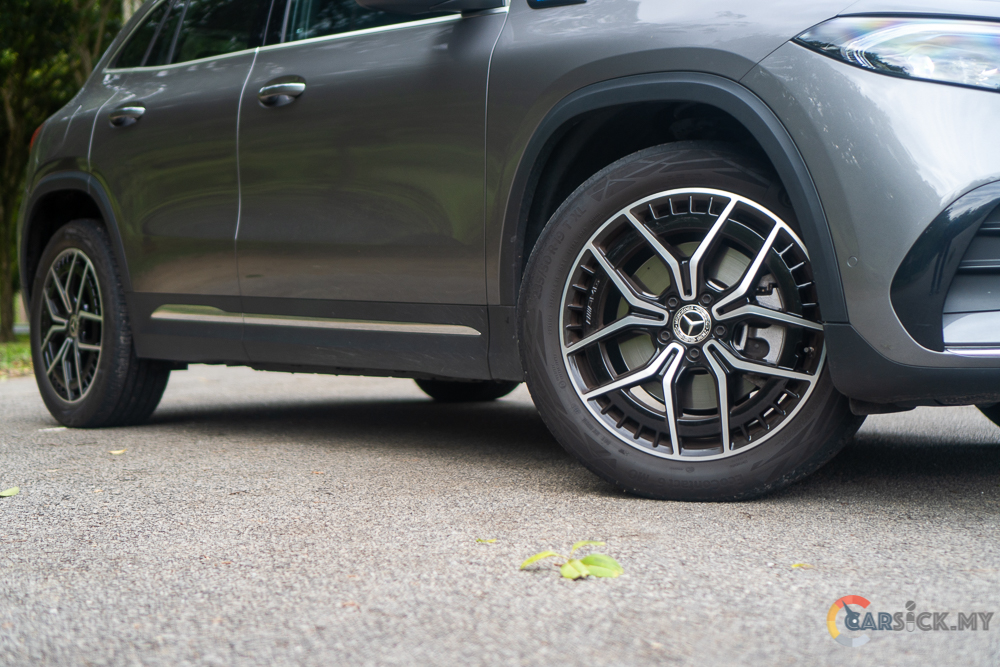
Upon opening the door of the EQA, you will immediately realize that its interior is nearly identical to that of the GLA. The only distinguishing feature is the EQA etched on the door sills. However, upon boarding, you will swiftly observe that the EQA is equipped with additional features that are absent in the GLA. Firstly, the EQA has a different instrument cluster graphics to complement its electric powertrain, similar to the EQC. Moreover, the EQA is also equipped with a useful heads-up display, augmenting the vehicle’s features. 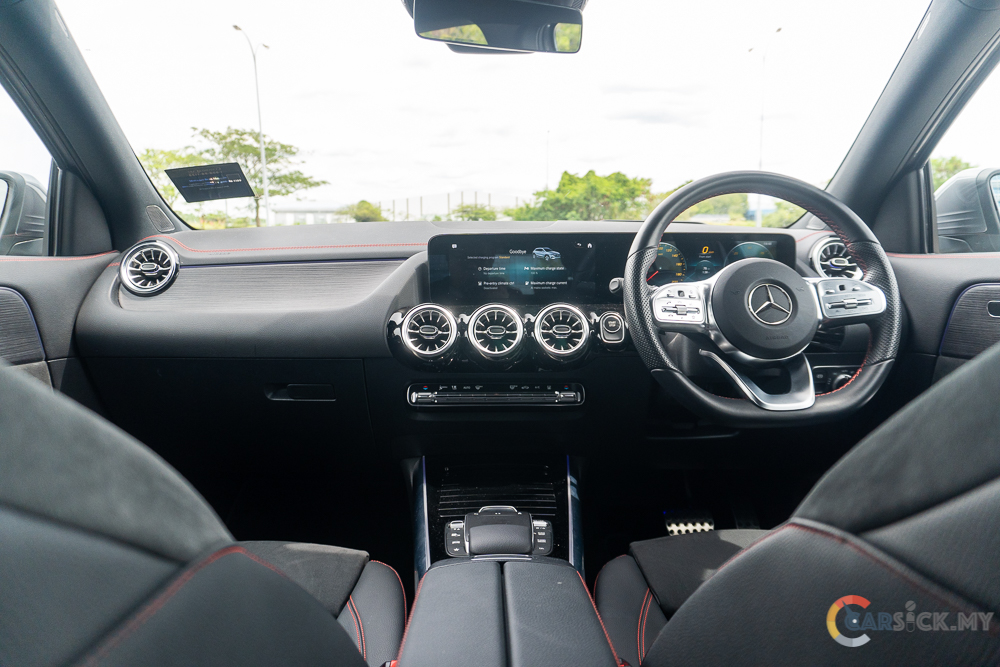
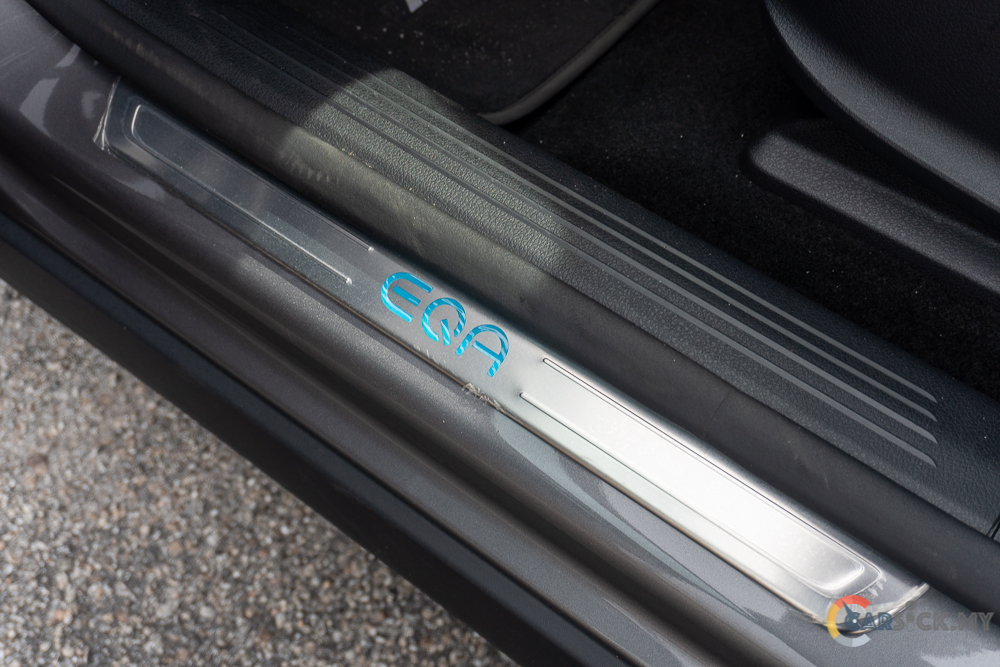
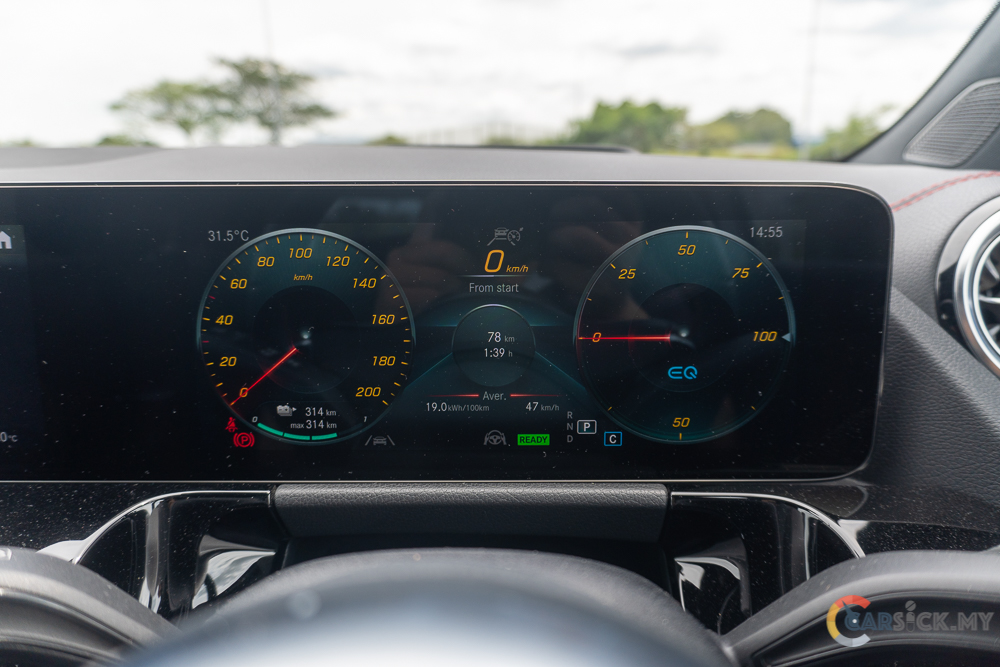
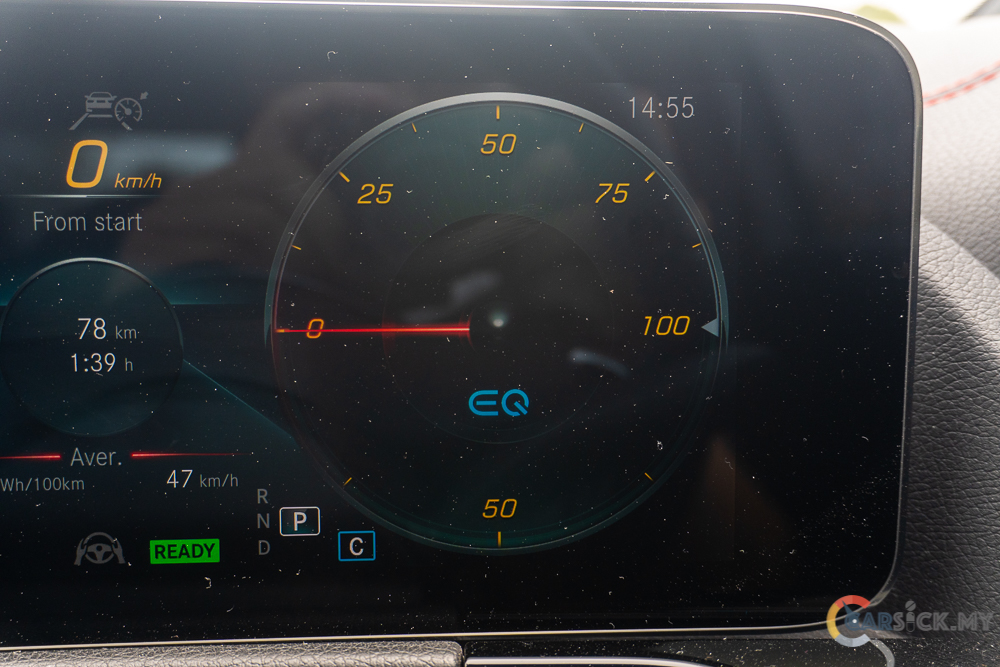
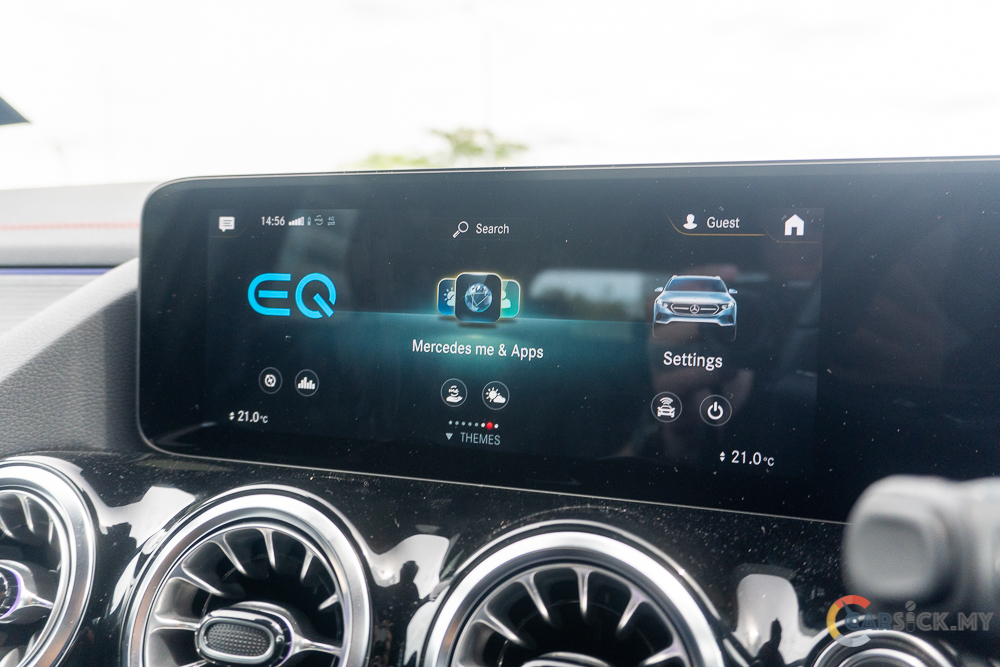
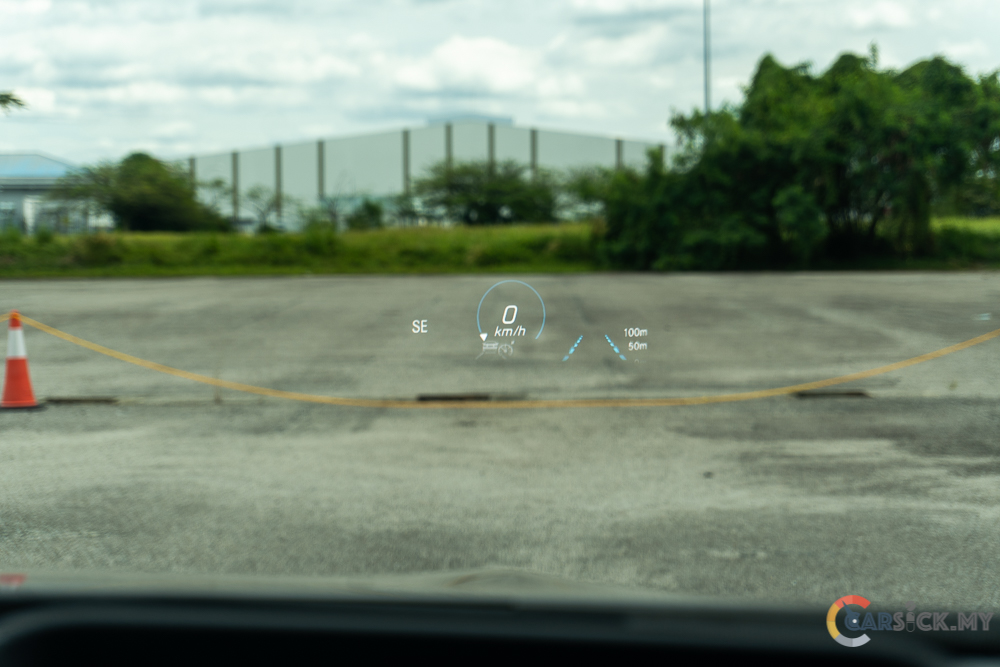
As for the seats, the EQA has almost identical seats to the GLA, including the front and rear seats. This provides a comfortable and familiar driving experience for the driver. In addition, the front seats have the added bonus of being heated, an upgrade from the locally assembled GLA. However, due to the location of the EV battery, the seat floor in the EQA is slightly taller than in the GLA, giving the rear passengers the impression that the seat bench is lower. As a result, the center tunnel has also been reduced. Although the boot space in the EQA is 5L smaller than in the GLA, at 340L, it is still a decent size and can be expanded by folding down the rear seats. The difference in boot space is not noticeable visually. 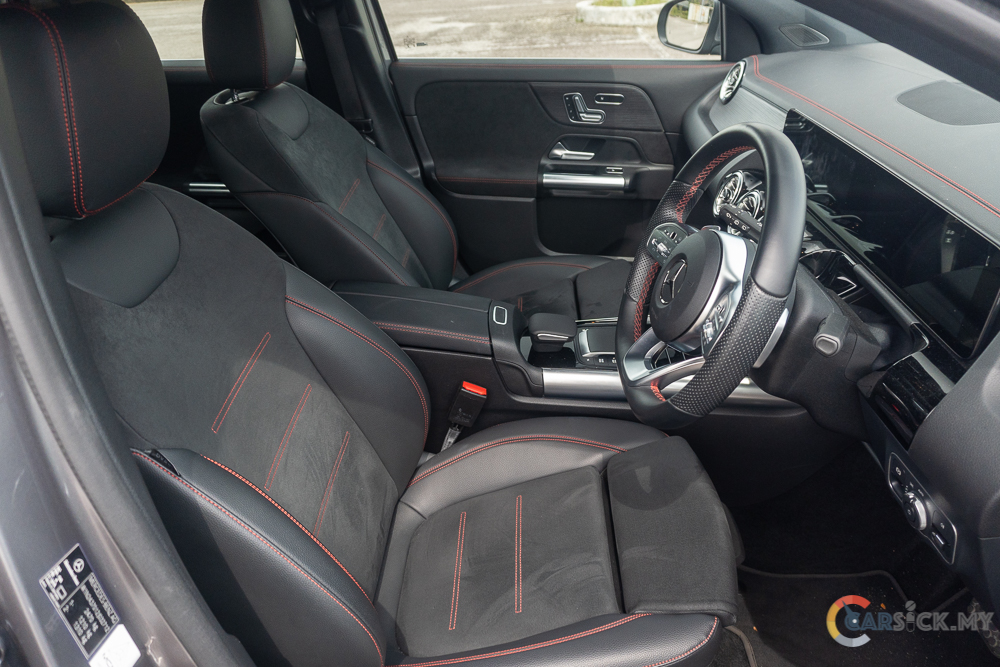
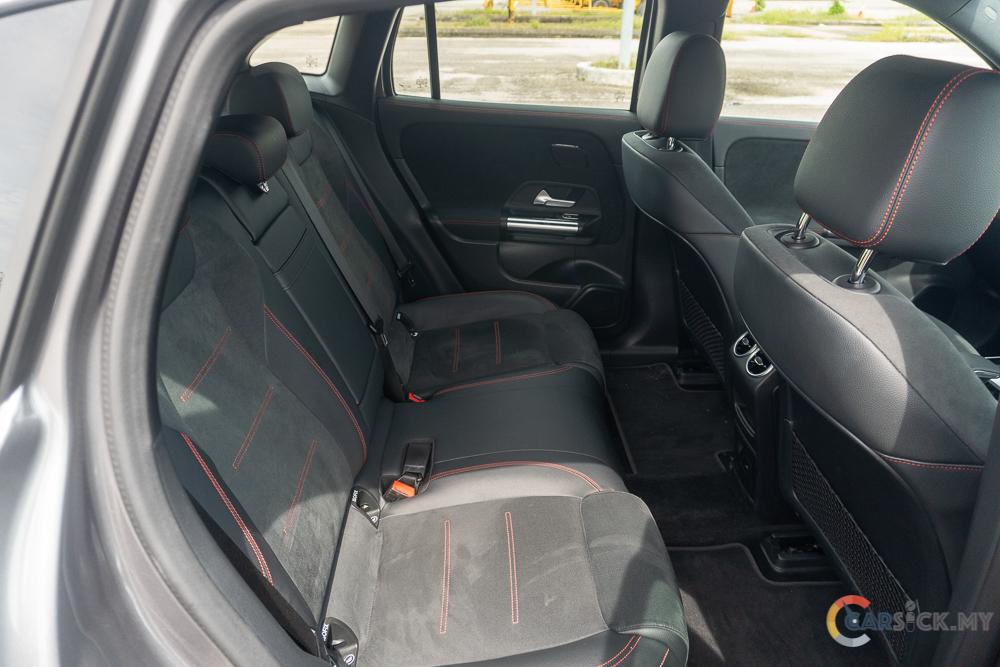
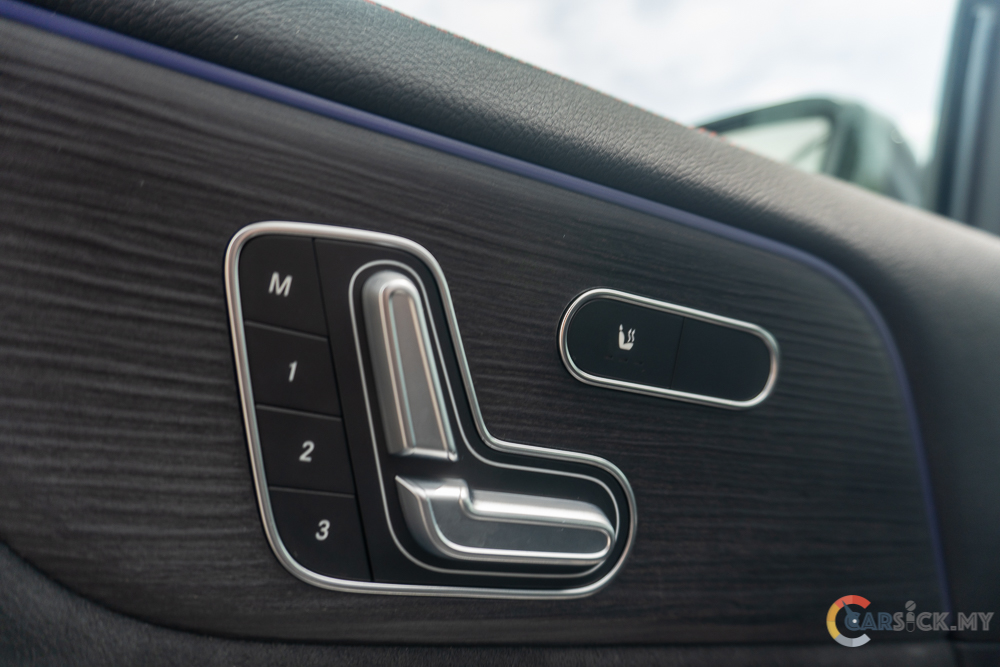
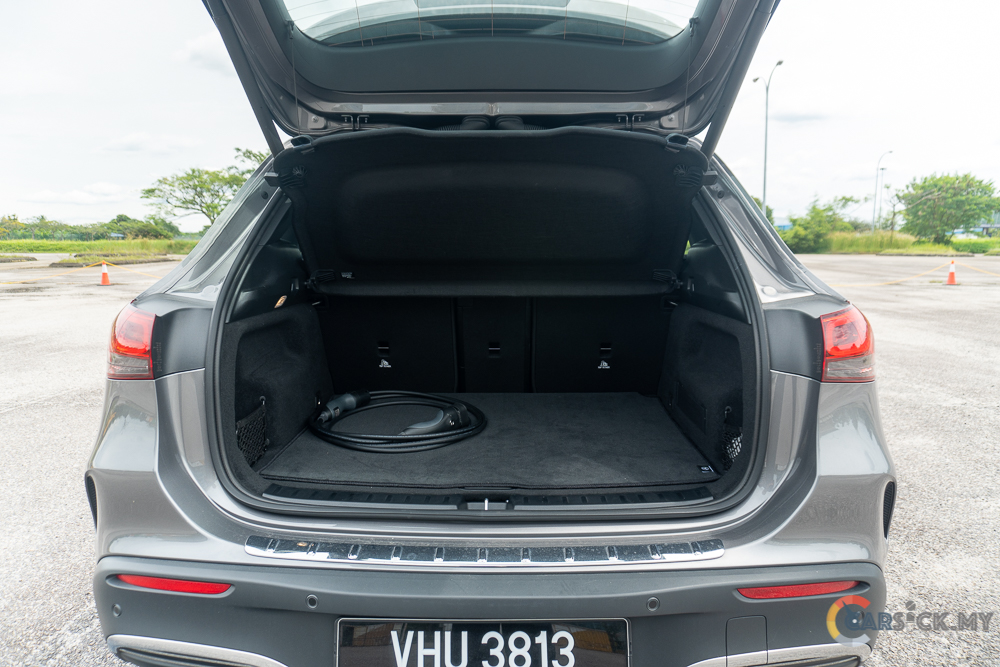
The EQA is equipped with a single electric motor placed in the front to provide drive to the front wheels. The motor is powered by a 66.5kWh battery that gives the vehicle a theoretical range of 496 km. With a total output of 190 horsepower and 385 Nm of torque, the EQA can accelerate from 0 to 100 km/h in 8.9 seconds and has a top speed of 160 km/h. 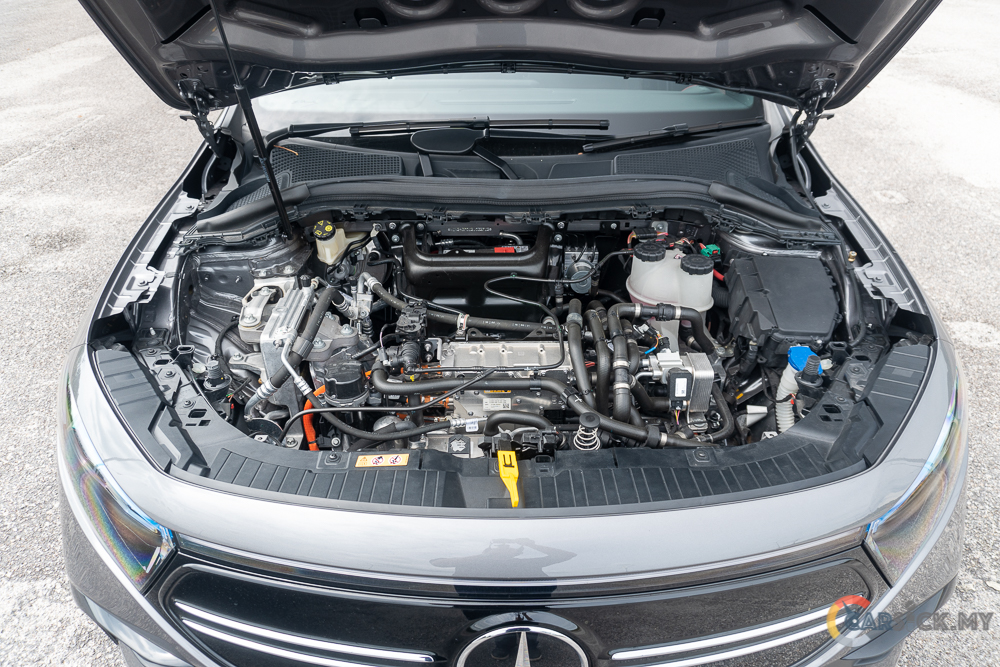
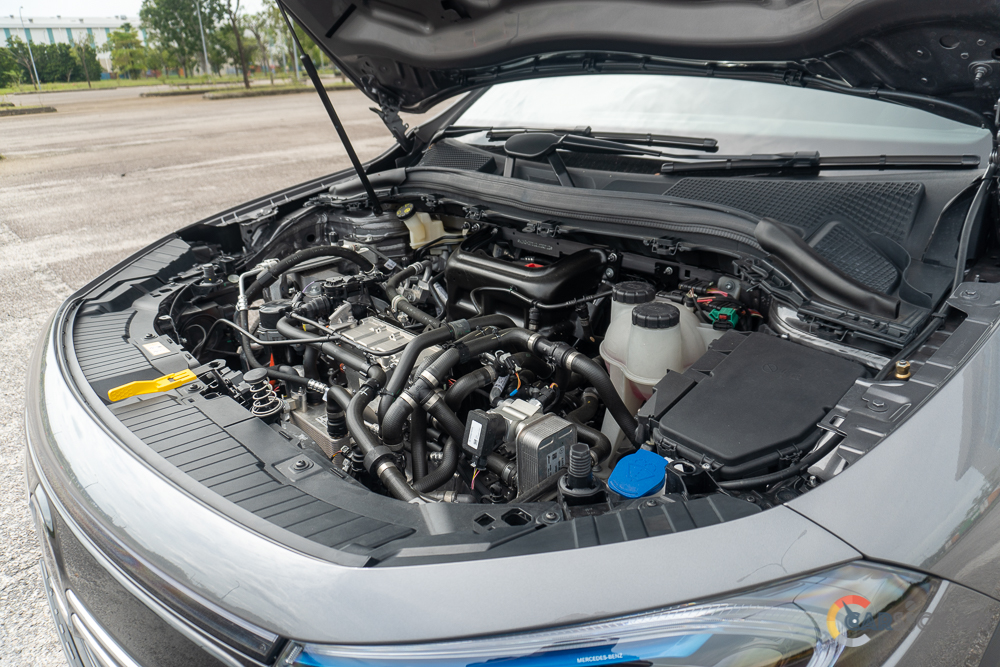
By utilizing the electric motor’s instant torque, the EQA takes off from the line effortlessly. However, the absence of any engine noise may make it difficult to perceive that you have already achieved a three-digit speed. Furthermore, the EQA lacks the powerful “kick in the back” sensation during acceleration, unlike the EQC. As a result, the EQA’s driving experience has a close resemblance to the GLA.
Using a single electric motor has the additional benefit of allowing the EQA to attain excellent power efficiency. Throughout my review period, covering a distance of 800 km, I was able to achieve an average of 20.3kW/100km. As such, the EQA has the potential to travel over 400km on a full charge. During a charging session at a 180kW fast charger, I experienced a peak charging speed of 88kW. While this is commendable, I would prefer the charging process to be even faster. 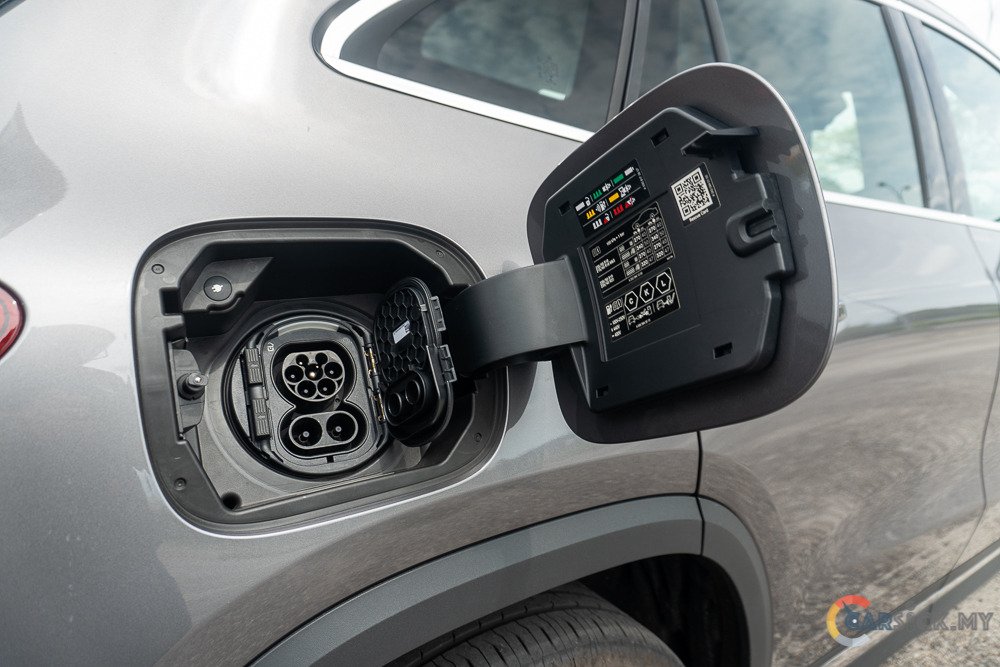
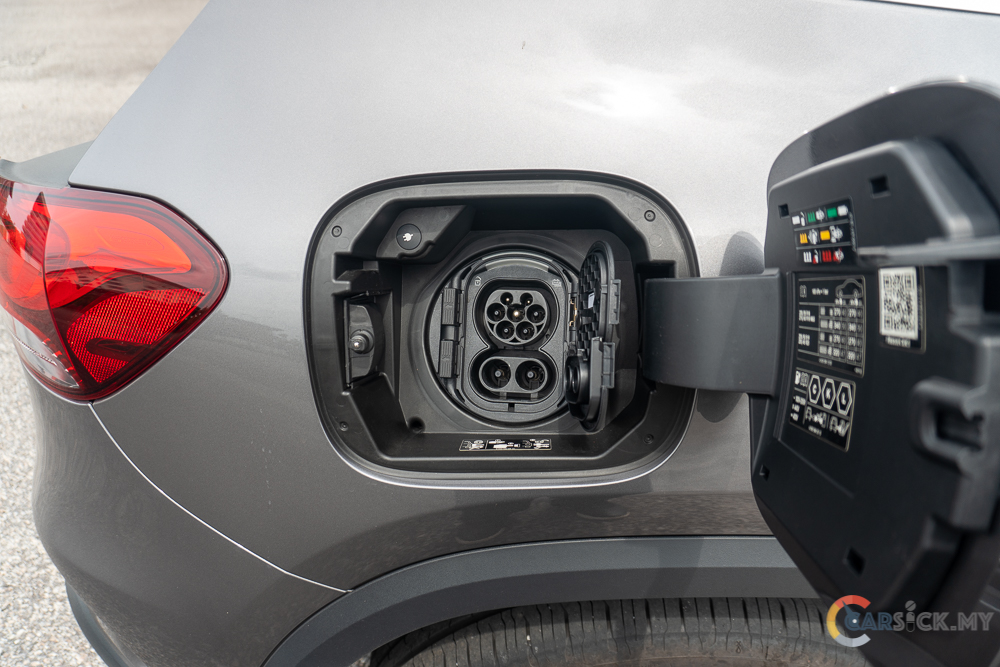
Handling wise, the EQA handles pretty similar to the GLA. However, the weight of the vehicle becomes apparent when changing direction abruptly, highlighting the importance of predictability when driving electric vehicles. Regarding the steering, the EQA boasts a direct steering wheel, providing the driver with a clear sense of the wheels’ direction. In corners, the EQA remains stable with minimal body roll.
Regarding the ride, the EQA exhibits a slightly firmer ride compared to the GLA, which is necessary to support the additional weight of the electric powertrain. However, this firmer suspension also serves to minimize the likelihood of the EQA from bottoming out when encountering bumps. Despite the firmer suspension, the EQA still provides a well-controlled ride, even on uneven road surfaces. 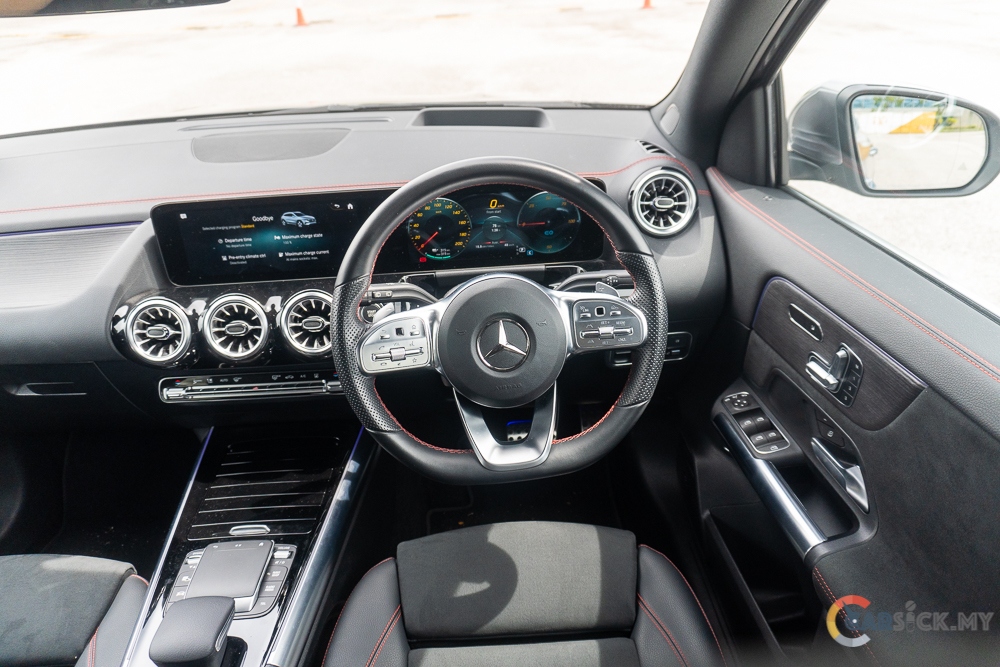
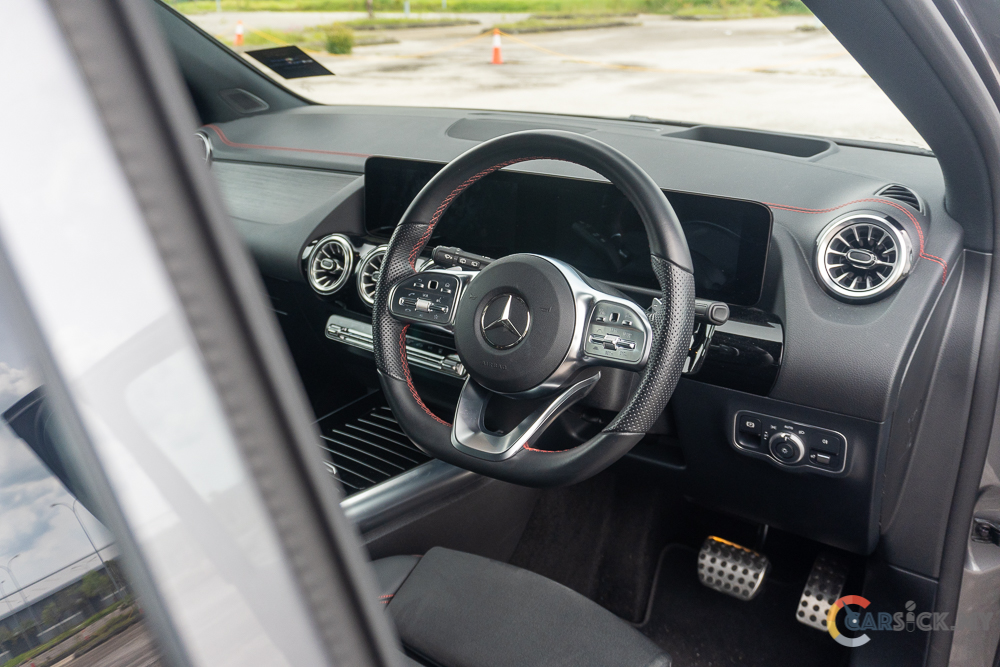
Similar to the EQC, the EQA did not come with one pedal driving, but its transition between regenerative brakes and physical brakes is more seamless. It also comes equipped with the same advanced safety features and driver assistance package as the EQC, making it more feature-packed than the GLA.
The safety and driver assistance systems available on the EQA include Active Distance Assist DISTRONIC, Active Lane Keeping Assist, Adaptive Highbeam Assist, Tyre Pressure Monitoring System, and many more. Additionally, it has an Interior Monitoring System and URBAN GUARD vehicle protection, which are not present in the GLA. Overall, the EQA offers an impressive suite of safety and driver assistance features, making it a desirable option for those in search of a reliable and advanced vehicle. 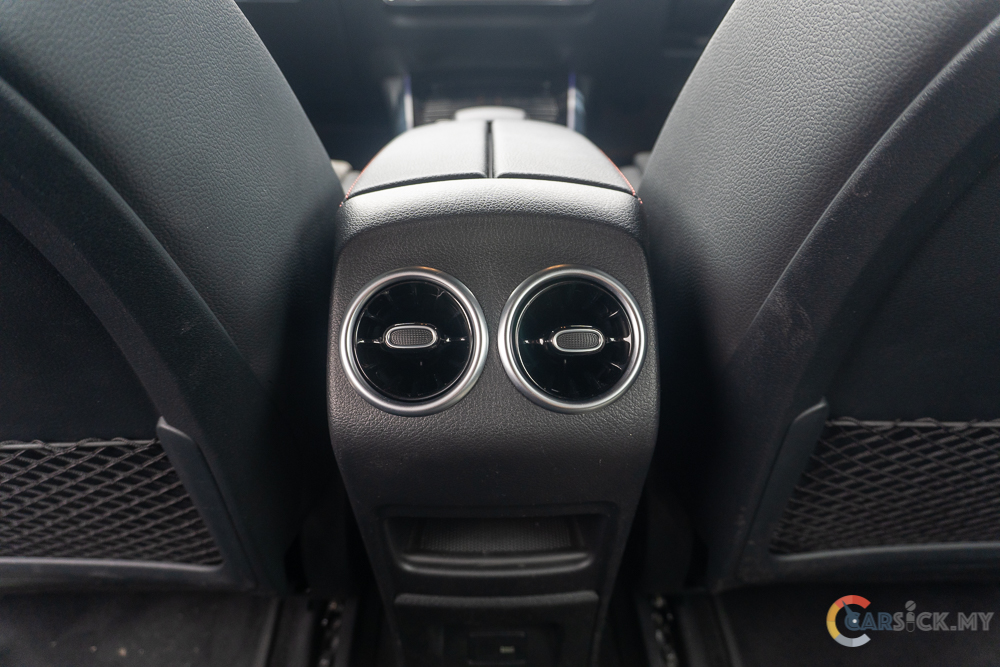
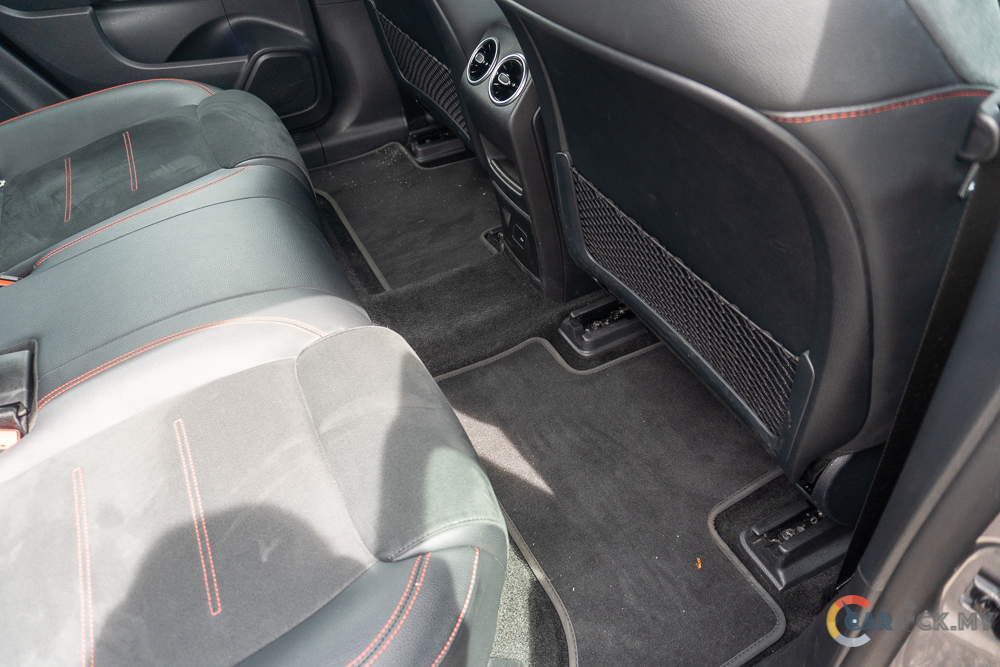
In my opinion, the EQA’s size is quite favorable, especially when driving on Malaysian roads, as it is based on the GLA. Although larger electric vehicles can be practical for many people, the EQA seems like a more sensible choice for those mainly traveling around Klang Valley. Priced at RM 296,888.00, I believe that Mercedes has created an excellent small premium SUV for EV enthusiasts. Currently, it stands out as one of the most well-balanced and best front-wheel-drive EVs that I’ve driven so far. 